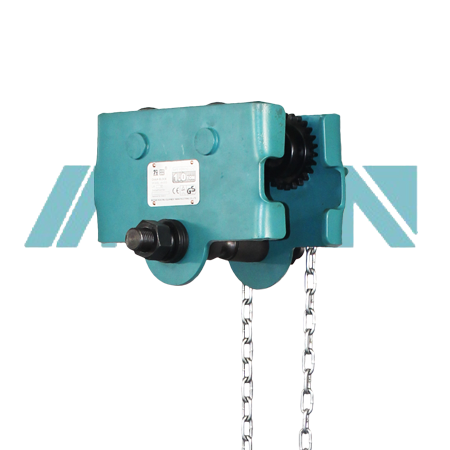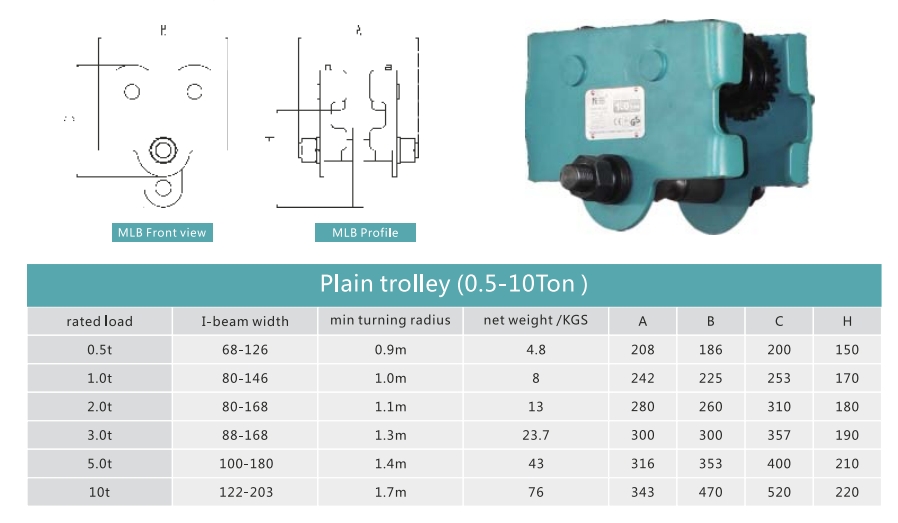 中文版
中文版



Welcome to contact us by phone:0086-0312-7969888
The internal structure of a hand chain hoist trolley can vary depending on the specific design and manufacturer. However, I can provide a general overview of the key components typically found within a hand chain hoist trolley:
Frame: The frame is the main structural component of the hoist trolley, usually made of sturdy steel or aluminum alloy. It provides support for all other components and houses the mechanisms for lifting and traversing.
Wheels or Rollers: Mounted on the frame, wheels or rollers enable the hoist trolley to move along the beam or track smoothly. These may be plain wheels or equipped with bearings for reduced friction and enhanced maneuverability.
Hoisting Mechanism: The hoisting mechanism includes the chain or wire rope, lifting hook or attachment point, and gearing system. When the operator pulls the hand chain, it engages the gearing system to raise or lower the load. The chain or wire rope is guided through a series of pulleys or sheaves to ensure smooth operation.
Load Holding Brake: A load holding brake is a crucial safety feature that prevents the load from slipping or falling in the event of a chain break or accidental release. It typically consists of friction discs or brake pads that engage automatically when the hand chain is released, holding the load securely in place.
Chain Guide: A chain guide ensures proper alignment and smooth operation of the hand chain as it moves through the hoist trolley. It helps prevent the chain from becoming tangled or misaligned during lifting and traversing operations.
Gearing System: The gearing system consists of gears and shafts that transmit the force applied to the hand chain to the lifting mechanism. It may include gear trains with different gear ratios to provide the necessary mechanical advantage for lifting heavy loads with minimal effort from the operator.
Bearings and Bushings: Bearings and bushings are used throughout the hoist trolley to reduce friction and facilitate smooth movement of the various components, such as the wheels, gears, and pulleys.
Fasteners and Hardware: Various fasteners, bolts, nuts, and pins are used to assemble and secure the components of the hoist trolley together. These ensure the structural integrity and reliability of the hoist under load.
Overload Protection: Some hand chain hoist trolleys may be equipped with overload protection devices such as overload clutches or limit switches. These devices prevent the hoist from lifting loads exceeding its rated capacity, thereby protecting against overloading and potential damage to the hoist or the load.
This overview provides a general understanding of the internal components and structure of a hand chain hoist trolley. Actual designs may vary, and specific features or components may be added or modified by different manufacturers to meet the requirements of various applications and industries.
The main equipment produced by Hebei Makita: stage electric hoist, electric hoist, manual hoist, lever hoist, pneumatic hoist and other lifting equipment

X